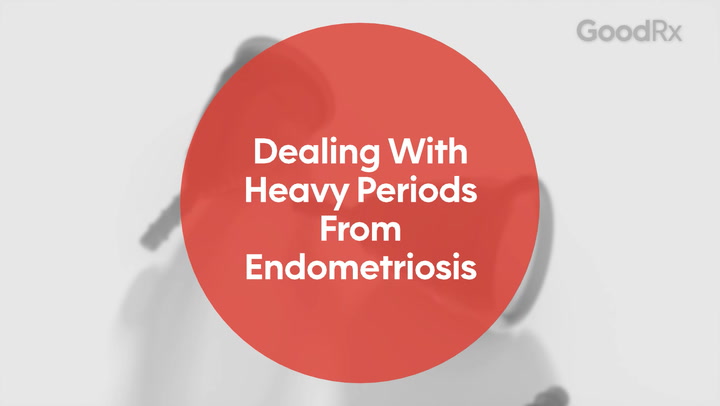
Endometriosis Surgery: Understanding Your Treatment Options
Key takeaways:
Treatment for endometriosis includes medication or surgery.
There are two basic types of surgery for endometriosis: hysterectomy (removal of the uterus) and laparoscopy (minimally invasive surgery to remove endometrial implants).
Hysterectomy is an effective treatment option if other medical therapies have failed and you do not want to become pregnant.

Endometriosis can be a chronic and debilitating disease that affects 6% to 10% of women of reproductive age. It occurs when tissue from the lining of the uterus (endometrium) spreads to other locations in the body. It most commonly spreads to the abdomen and pelvis, which can cause scarring, pelvic pain, and infertility.
Sometimes medications can help. But when they don’t work, surgery may be an option. The goal of surgery is to remove the source of the endometrial tissue with a hysterectomy or remove the abnormal endometrial tissue through a laparoscopy.
What are the different types of endometriosis surgery?
There are two main types of surgery for endometriosis.
1. Hysterectomy
Hysterectomy removes the uterus (womb). This surgery removes the source of the abnormal endometrial tissue. Removing the uterus also takes out the most likely source of painful periods. But removing the uterus means you can’t get pregnant again.
Surgeons can perform a hysterectomy in a few different ways:
Open: A surgeon makes an incision in the abdomen.
Vaginal: A surgeon removes the uterus through the vagina. A vaginal hysterectomy usually isn’t an option for endometriosis because it does not allow your surgeon to look in your abdomen and pelvis.
Laparoscopic: A surgeon removes the uterus through smaller incisions in the abdomen with assistance of a camera or sometimes a robot (more on this below).
2. Laparoscopy
With laparoscopic surgery, your surgeon can remove the endometriosis implants that are outside of the uterus. The camera lets them look around your abdomen and pelvis to make sure they have an accurate diagnosis. Sometimes, with pain and infertility, the cause can be unclear.
Due to the smaller incisions, laparoscopy usually requires less time for recovery. By removing only the areas of endometriosis — not the uterus or ovaries — laparoscopy preserves fertility. And this is often a main reason for the surgery.
How long does endometriosis surgery take?
The length of time for endometriosis surgery varies. It depends on the type of surgery and how much endometrial tissue has spread. Laparoscopy for a minimal amount of scarring and endometrial implants could take less than an hour. But it can take several hours to remove a lot of endometriosis. A hysterectomy can also take several hours.
When might you need endometriosis surgery?
Surgery for endometriosis treats chronic pain, infertility, or ovarian cysts. Your provider may recommend surgery if treatment with medication doesn’t work or causes too many side effects.
These treatment guidelines may seem straightforward, but it can be difficult to make an endometriosis diagnosis. So surgery can also be an option when the cause of your symptoms isn’t clear or when you need immediate treatment.
Deciding when to have surgery can be challenging. Surgery does not always improve symptoms. And endometriosis may come back in up to 50% of people after laparoscopy. To reduce the risk of recurrence and the need for additional surgery, medical professionals often recommend medication (such as birth control pills) after surgery.
The risk of recurrence is lower after hysterectomy, but it’s still possible. Removing both ovaries at the time of hysterectomy may be another option to consider. That’s because it can reduce the need for additional operations, and it can also improve pain from endometriosis.
Endometriosis can be frustrating and overwhelming. Your gynecologist will discuss your treatment options with you, including risks and benefits. This should help you to make the best decision possible for your situation.
How much does endometriosis surgery cost?
The cost for endometriosis surgery varies depending on where you live, your insurance, and the type of surgery. Insurance usually covers surgery if you need it due to pain. But insurance companies often don’t cover procedures for infertility.
Common complications with endometriosis surgery
As with any surgery, the most common complications are pain, bleeding, and infection.
Both minor and major complications from surgery can occur. Major complications include:
Serious infection
Injury to organs, such as the intestines or bladder
Injury to large blood vessels that results in significant blood loss
Blood clots
Minor complications can include:
Anemia (low red blood cell count)
Abscess (small pocket of infection)
Swelling
Hernia (weak spot in the abdominal wall)
Studies show that the risk of major complications is about 2% with laparoscopy. And there’s a 4% risk of minor complications. Hysterectomy carries a higher risk of complication, with a roughly 10% risk of infection and a 1% to 2% risk of intestinal or bladder injury.
Sometimes a planned laparoscopy will require a larger incision, known as a “laparotomy.” This increases the risk of complications and recovery time.
Perhaps most importantly, there’s a chance the surgery might not improve your symptoms. It’s also possible for your symptoms to recur within 1 to 2 years.
Recovery after endometriosis surgery
The recovery process also depends on which procedure you had and how much endometriosis the surgeon removed. And everyone recovers at a different speed.
After minor surgery for minimal to moderate disease, most people feel recovered in about 1 week. But if your surgeon removes extensive endometriosis with laparoscopy, recovery can take up to 6 weeks. Hysterectomy is a major surgery, and you may need up to 6 weeks for recovery.
During recovery, you may not be able to drive for a couple of days (or possibly longer), depending on your level of pain control. Many surgeons recommend not lifting anything heavier than 20 pounds for 1 to 2 weeks. It’s important to rest when you need to but also to move daily to decrease the risk of blood clots. You’ll be able to gradually increase your activity over time.
Keep in mind that each situation is different, and your surgeon will give you detailed instructions on what to expect with recovery.
The bottom line
Medication is usually the first treatment for endometriosis. But surgery may be an option. You’ll need to consider the risks and benefits of the different types of surgery. Laparoscopy may be a good choice if you want to be pregnant now or in the future. Hysterectomy provides the best chance of improving pain, but it isn’t an option if you want to be pregnant and has more complications and a longer recovery.
While you may feel overwhelmed, discouraged, or even scared — there are good treatments available to help you feel better. To help make the decision that’s right for you, talk about your questions and treatment options with your gynecologist.
Why trust our experts?


References
American College of Obstetricians and Gynecologists. (2010). Management of endometriosis.
American College of Obstetricians and Gynecologists. (2021). Hysterectomy.
American College of Obstetricians and Gynecologists. (2021). Laparoscopy.
Bulletti, C., et al. (2010). Endometriosis and infertility. Journal of Assisted Reproduction and Genetics.
Clarke-Pearson, D. L., et al. (2013). Complications of hysterectomy. Obstetrics and Gynecology.
Falcone, T., et al. (2018). Clinical management of endometriosis. Obstetrics and Gynecology.
Fuentes, M. N., et al. (2014). Complications of laparoscopic gynecologic surgery. Journal of the Society of Laparoendoscopic Surgeons.
Nirgianakis, K., et al. (2020). Recurrence patterns after surgery in patients with different endometriosis subtypes: A long-term hospital-based cohort study. Journal of Clinical Medicine.
Shakiba, K., et al. (2008). Surgical treatment of endometriosis: A 7-year follow-up on the requirement for further surgery. Obstetrics and Gynecology.











